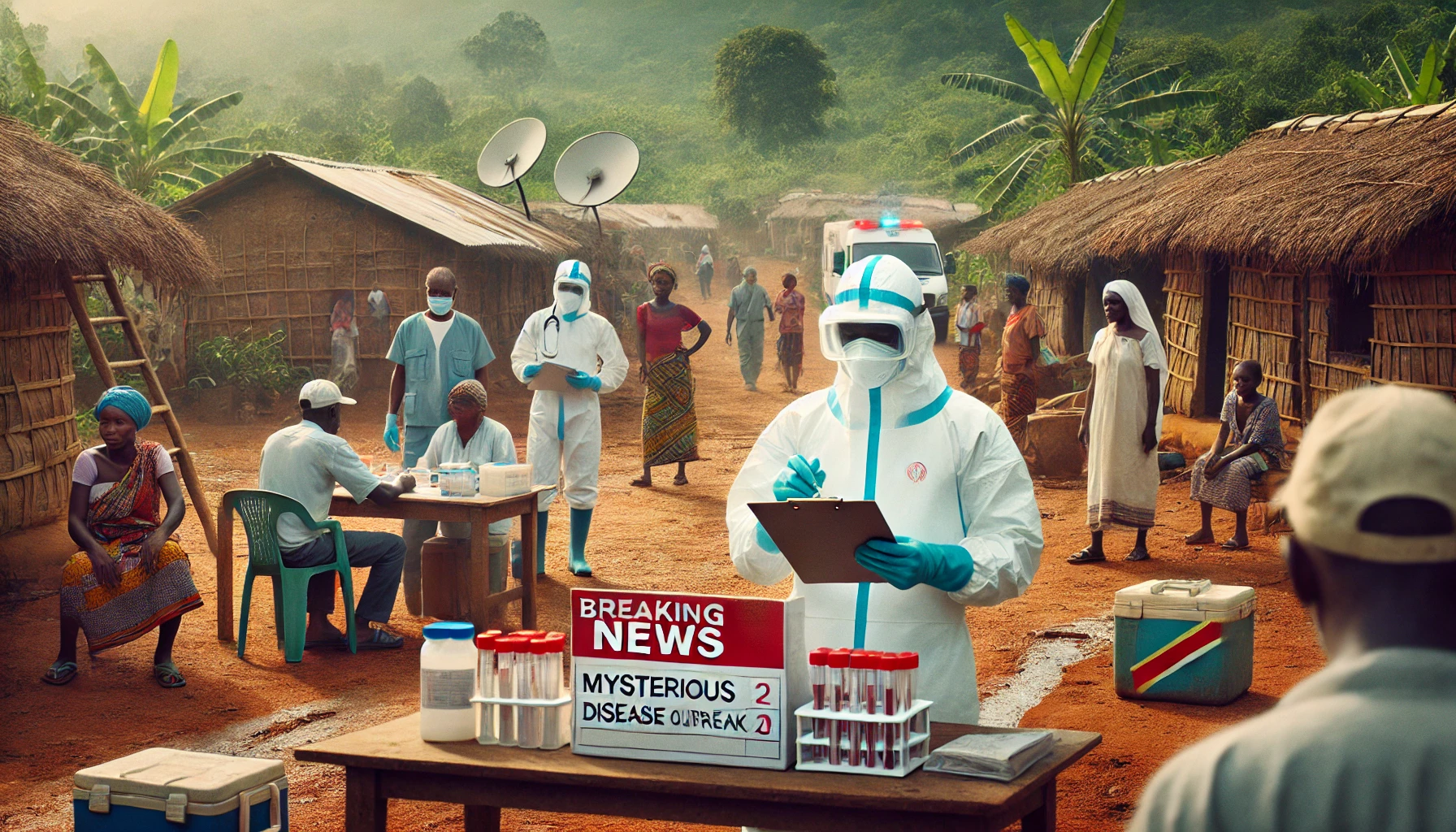A mysterious illness has emerged in the Democratic Republic of Congo (DRC), claiming the lives of over 50 individuals and infecting nearly 500 others since January 21, 2025. This outbreak, centered in the Boloko region, has alarmed health officials due to its rapid progression and high fatality rate. Initial reports suggest that the disease may have originated from zoonotic transmission, with early cases linked to the consumption of a bat carcass. Health authorities, including the World Health Organization (WHO), are conducting extensive investigations to identify the causative agent and contain the outbreak.
Symptoms and Disease Progression Patients affected by the unknown disease present with a range of severe symptoms, including:
- High fever
- Intense headaches
- Chills and body aches
- Persistent cough
- Diarrhea
- Stiffness in the neck
- Hemorrhagic manifestations in severe cases
The most alarming aspect of this outbreak is the rapid deterioration of patients. Many have succumbed to the illness within 48 hours of symptom onset, suggesting an aggressive and possibly virulent pathogen. The speed at which the disease progresses has left health officials struggling to implement effective interventions.
Origin and Spread of the Outbreak The outbreak was initially reported in Boloko, where three children were among the first victims. They reportedly fell ill after consuming a bat carcass, raising concerns about zoonotic transmission. This mode of transmission is reminiscent of past outbreaks involving viral hemorrhagic fevers, such as Ebola and Marburg, which have historically been linked to contact with infected animals.
As the disease spread, cases surged within surrounding communities, leading to over 50 reported deaths and nearly 500 infections within weeks. Despite efforts to contain the outbreak, new cases continue to emerge, prompting authorities to enforce emergency health measures.
Investigation and Health Response The DRC’s Ministry of Health, in collaboration with WHO and other global health organizations, has launched an in-depth investigation to determine the nature of the disease. Key developments in the investigation include:
- Laboratory Testing: Initial tests have ruled out known hemorrhagic fevers such as Ebola and Marburg. However, some patients have tested positive for malaria, leading health officials to consider the possibility of co-infections rather than a single causative agent.
- Genomic Sequencing: Scientists are conducting genomic sequencing to identify any novel viral or bacterial pathogens that may be responsible for the outbreak.
- Epidemiological Studies: Researchers are tracing the spread of the disease to determine potential risk factors and transmission patterns.
Efforts are also being made to educate the local population on preventive measures, including:
- Avoiding the consumption of wild animals (bushmeat)
- Maintaining proper hygiene and sanitation
- Seeking medical attention at the earliest signs of symptoms
Historical Context of Similar Outbreaks The DRC has faced numerous public health crises in recent years. In December 2024, a similar outbreak resulted in 79 fatalities, with patients displaying flu-like symptoms. That illness was ultimately linked to acute respiratory infections exacerbated by malaria. The frequent emergence of mysterious diseases in the region highlights critical challenges, including:
- Limited access to healthcare and diagnostic facilities
- High prevalence of zoonotic diseases
- Inadequate infrastructure for disease surveillance and control
Public Health Measures and Containment Efforts In response to the outbreak, emergency containment measures have been implemented, including:
- Deployment of rapid response teams to affected regions
- Establishment of quarantine zones to prevent further transmission
- Distribution of medical supplies and personal protective equipment (PPE)
- Public awareness campaigns to educate communities on symptom recognition and disease prevention
Despite these efforts, the high mortality rate and lack of a confirmed diagnosis make containment a significant challenge. International health organizations are urging increased global cooperation to provide resources and expertise to the DRC in managing the crisis.
Conclusion The emergence of this unknown disease in the DRC underscores the ongoing threat of emerging infectious diseases, particularly in regions with fragile healthcare systems. With over 50 fatalities and nearly 500 infections reported, urgent action is needed to identify the causative agent and implement effective containment strategies. As investigations continue, global health authorities remain vigilant in preventing the further spread of the disease.
For further updates and official reports, refer to the following sources:









Leave a Reply